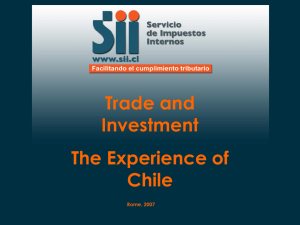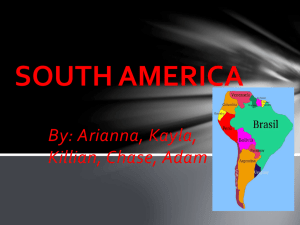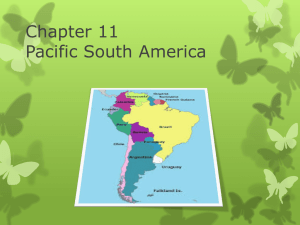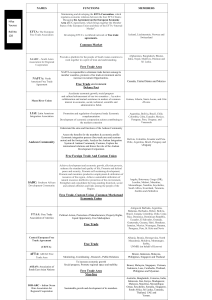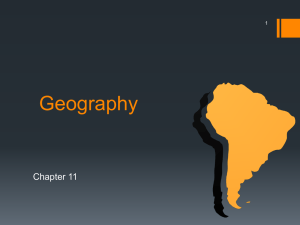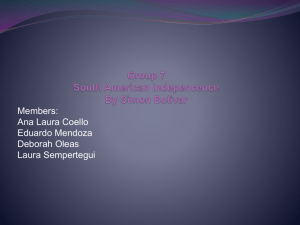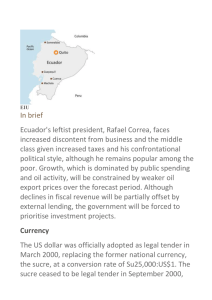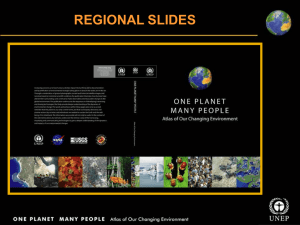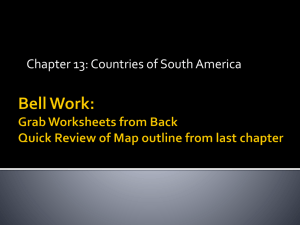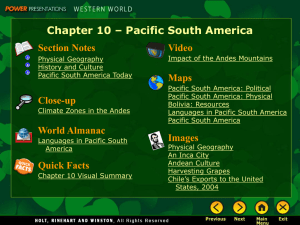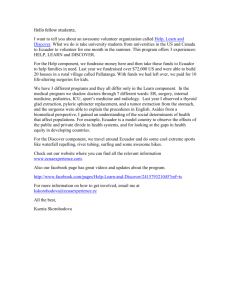Ecuador Today
advertisement
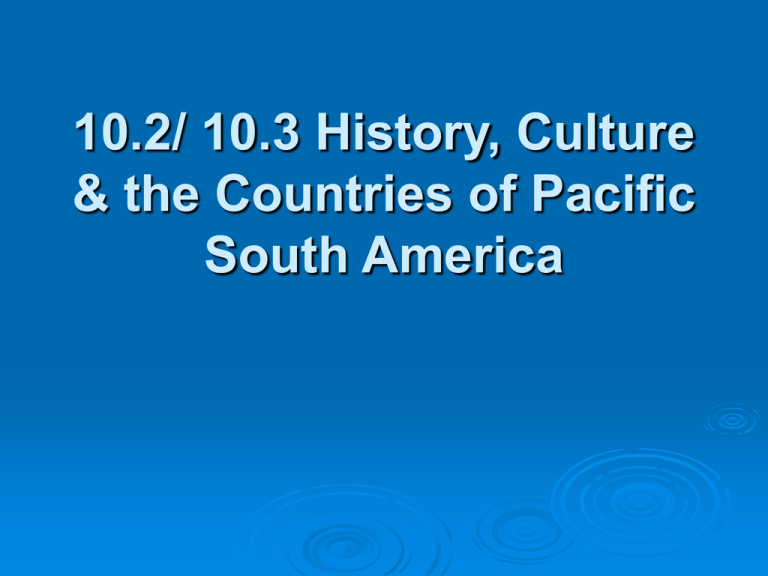
10.2/ 10.3 History, Culture & the Countries of Pacific South America Early History Advanced civilizations lived in places like Peru as early as 900 BC. The raised crops in the mountains of the Andes and made huge stone carvings. The Inca controlled an area that stretched from northern Ecuador to central Chile in the early 1500s. The Inca Empire was home to as many as 12 million people. The Inca city of Machu Picchu Spanish Rule Pizarro conquered the Inca’s with his army of conquistadors by 1535. The Spanish treated the South American Indians harshly and made them work in gold or silver mines, or on the Spaniards’ plantations. A Spanish viceroy (governor) was appointed by the king of Spain to make sure the Indians followed Spanish laws and customs that had replaced native traditions. Francisco Pizarro & Atahualpa …remember them? Independence Creoles (American-born descendants of Europeans) were the main leaders of revolts for independence in this region. All four Pacific South American countries were independent by 1825. Culture Spanish is the official language of all four countries in this region. Many South Americans also speak the language of their native culture. Most people of the region practice Roman Catholicism. Some people in the Andes still practices ancient religious customs. • For example, every June, people participate in the festival that was celebrated by the Incas to worship the sun. Ecuador Today Ecuador is a democracy. However, the country has had 9 different presidents in 10 years which has made the country unstable. Ecuador has three different economic regions: The coastal lowlands region relies heavily on agriculture and industry. • The country’s largest city, Guayaquil is located here. The Andean region is very poor. • Quito, the capital of Ecuador, is located here. The Amazon basin has valuable oil deposits which is Ecuador’s main export. Bolivia Today After years of military rule, Bolivia is a democracy. Bolivia’s government is divided between two capital cities – Sucre and La Paz. • The Supreme Court meets in Sucre and the congress meets in La Paz. • La Paz is the highest capital city in the world at 12,000 feet. Bolivia is the poorest country in South America. There are few roads and little money in the country to help the problems it is facing. Peru Today Peru is the largest and most populous country in Pacific South America. Its capital is Lima – it’s the largest city in the region. • Lima was the colonial capital of Peru so the city still contains many beautiful old buildings from the colonial era. Lima During the 1980s and 1990s a terrorist group known as the Shining Path was active in Peru. They waged deadly attacks because they opposed the government. 70,000 people died in the violence between the Shining Path and Peru’s military. Today, the violence has ended and Peru has an elected president and congress. Chile Today In 1970 Chileans elected a president who had some ideas influenced by communism. A few years later he was overthrown and died in a U.S.-backed military coup (a sudden overthrow of a government by a small group of people). After the coup, Chile’s military government was harsh and violent as it imprisoned or killed thousands of people. After years of unrest, Chile is one of the most stable countries today with a democratic government. About one-third of all Chileans live in central Chile which includes the country’s capital of Santiago and nearby seaport, Valparaiso. Santiago

